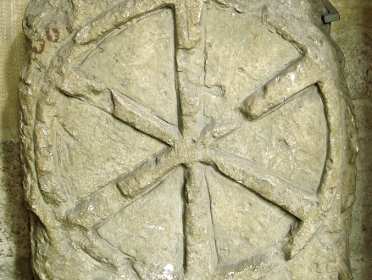Merovingians

Origin of the Merovingians
Merovingians were a Frankish ruling dynasty which preceded the Carolingian dynasty. They are named after Merovech of whom virtually nothing is known except that he was the grandfather of Clovis I, the founder of the Merovingian dynasty and that he died around 458. Merovech was after his death succeeded by his son Childeric I who ruled the Salian Franks from his capital in Tournai.
Clovis I, the Founder of the Merovingian Dynasty
Clovis I (born c. 465) succeeded his father as king of the Salian Franks after his death in 481. He deposed Syagrius, the last Roman official in Gaul, united the Frankish tribes, became the first King of the Franks and extended his rule over almost the entire Gaul. Before the Battle of Tolbiac against the Alamanni which took place in 496 or 506, he allegedly vowed to convert to Catholicism if winning the battle. He was victorious at Tolbiac and embraced Catholicism thereafter by which he differentiated himself from other Germanic rulers who converted to Arian Christianity (proclaimed heretic in the 4th century) and ensured himself the support of predominantly Catholic Gallo-Roman population as well as the Roman Catholic Church.
Merovingians after Clovis’ Death
Clovis’ realm was after his death in 511 divided among his four sons. Despite the division of the Frankish Kingdom and rivalry between the Clovis’ successors, the Realm of the Franks retained its unity and annexed Thuringia and Burgundy in 530’s. His son Chlothar I who outlived his brothers united the entire Frankish Kingdom in 558 but the Frankish realm was divided again after his death in 561. The period from Chlothar’s death until the accession of his grandson Chlothar II in 613 was marked by internal strives and formation of three integral parts of the Frankish realm: kingdom of Austrasia with capital at Metz in the east, kingdom of Neustria with capital at Soissons and later at Paris in the west, and Burgundy with capital at Chalon-sur-Saone in the south.
Chlothar II and Dagobert I
Chlothar II became sole King of the Franks after inheriting the kingdoms of Austrasia and Burgundy in 613. Meanwhile the royal power continued to decline as the Frankish rulers depended on the local leaders in their struggles against one another which increased the power and wealth of their followers in return for their support. The Frankish realm split into two political units – Austrasia on the one hand and Neustria and Burgundy on the other after the death of Chlothar’s son Dagobert I in 639, the last Merovingian ruler with actual power. Later Merovingian kings were little more than puppets, while the real power was assumed by the household officials known as the mayors of the palace. The Merovingian power virtually came to an end in 687 when Austrasian mayor of the palace, Pepin of Heristal defeated King Theuderic III in the Battle of Tertry and established himself as de facto ruler of the Realm of the Franks.
Childeric III, the Last King of the Franks from the Merovingian Dynasty
The Merovingians formally ruled the Frankish Kingdom until 751 when the last King of the Franks from the Merovingian dynasty, Childeric III (743-751) was deposed by mayor of the palace Pepin the Short from the Carolingian dynasty. Childeric and his son Theuderic were sent into monasteries, while the Merovingian dynasty disappeared from history.




